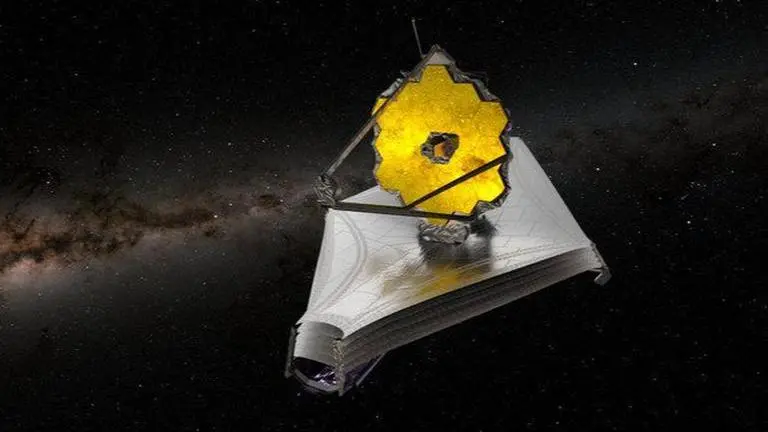Updated 22 January 2022 at 15:58 IST
James Webb Space Telescope to enter orbit at Lagrange point on Jan 25; Know all about it
According to NASA, Webb's installation will begin on January 25 at 12:30 am (IST) when the scientists will fire the telescope’s thrusters to insert it in orbit.
- Science News
- 2 min read

The James Webb Space Telescope is just days away from entering its orbit nearly a month after its launch. Having departed on December 25, 2021, Webb has so far completed over 96% of its journey and scientists are ready to insert it in at the second Lagrange point (L2), which is 1.5 million kilometres from the Earth. According to NASA, the installation of Webb will commence on January 25 at 12:30 am (IST) when the scientists will fire the telescope’s thrusters to insert it in orbit. But before Webb enters L2 to begin its observations, it is important to understand why Webb’s developers- NASA, the European Space Agency (ESA) and the Canadian Space Agency (CSA) chose the Lagrange point for the telescope.
So…you’ve heard that the Webb telescope will be orbiting Lagrange point 2. But what even is that, anyway? And how do you orbit something that isn’t an object?
— NASA Webb Telescope (@NASAWebb) January 21, 2022
We’ve got you! Here’s a thread ⬇️#UnfoldTheUniverse pic.twitter.com/7YTUeKh3Me
Here’s how the Lagrange point 2 will help Webb
Lagrange points are basically those locations in the universe where the gravitational forces of two massive objects are in equilibrium. These massive objects, in Webb’s case, are the Earth and the Sun and where Webb will be inserted is the Earth-Sun Lagrange. NASA explains that owing to stable gravitation in these locations, an infrared observatory such as Webb will be able to stay aligned to the Earth while the latter moves around the Sun. Another reason for choosing L2 for Webb is that the telescope and its instruments will remain in shade as the Sun, the Earth and the Moon will always be on one side, as indicated in the picture below.
(Image: NASA)
Webb basically has two sides, where one side faces the Sun and the other side consists of scientific instruments and is protected from heating with the help of sunshields. Since Webb's job is to detect faint heat signals in the universe, its instruments need to operate at about 225 degrees below zero Celsius. Another reason cited by NASA is the efficiency that this orbit would provide. Interestingly, Webb will be positioned in such a way that the Earth would never eclipse the Sun, and thus a constant power supply will be ensured. Convenient communication with the telescope using the Deep Space Network is another reason why scientists chose L2.
Advertisement
Image: Twitter/@ESA_Webb
Published By : Harsh Vardhan
Published On: 22 January 2022 at 15:58 IST

